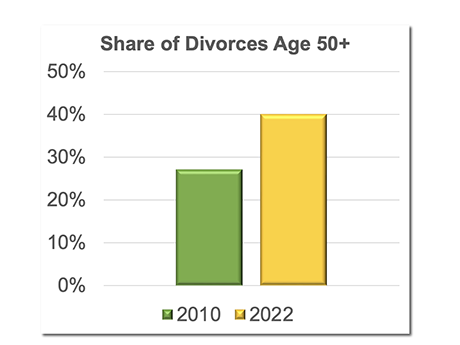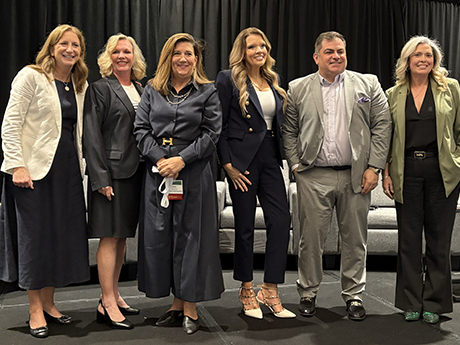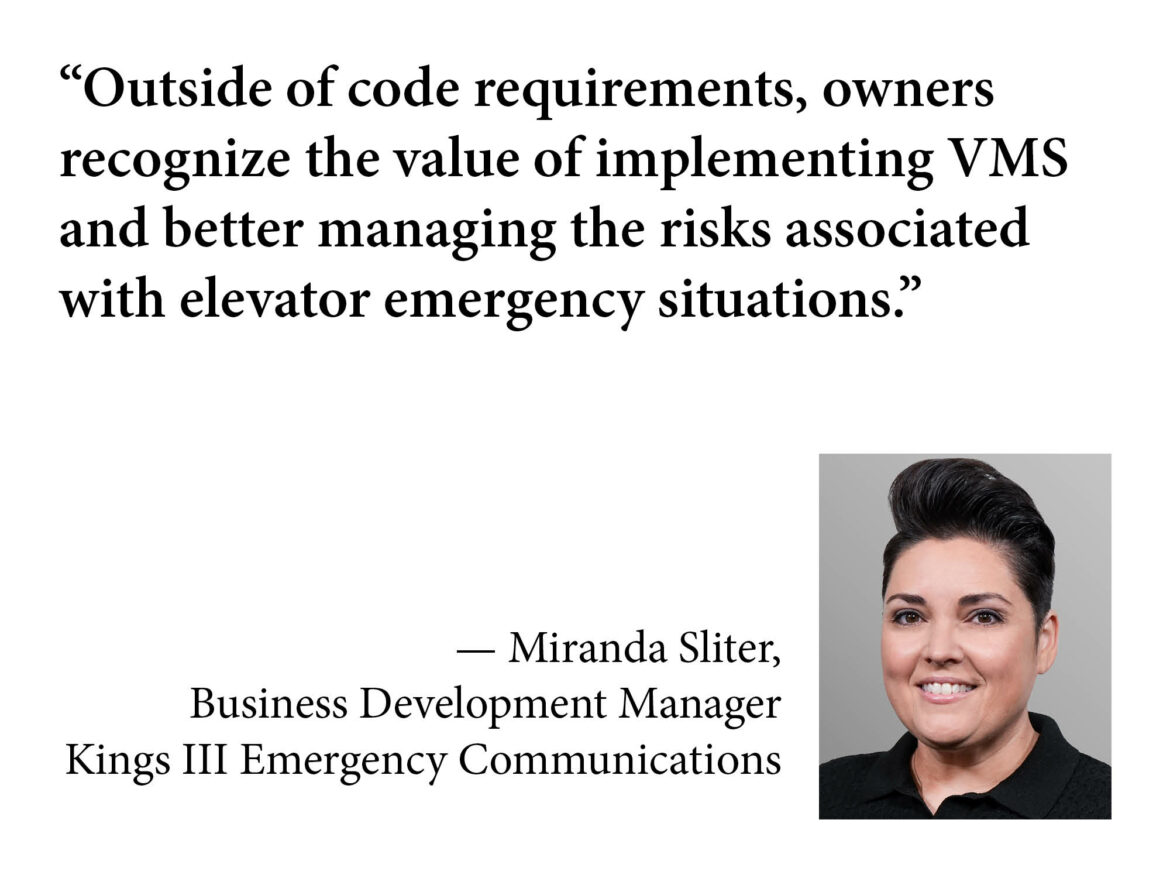By Bob Hankin Over the past several years, sustainability and energy efficiency have been key differentiators and quality indicators within the multifamily housing industry. However, the seniors housing industry has been slower to adopt these priorities — despite the benefits for residents’ health and wallets (which is particularly important for seniors living on a fixed income). From smart building technology to building design techniques, innovations in environmentally conscious development have the potential to transform the senior living experience, while also reducing long-term costs for developers and ensuring a better tomorrow …
Features
By Hayden Spiess DALLAS — Even those in their golden years are not immune to climbing rates of marriage dissolution. The divorce rate among couples wherein one of the spouses is age 50 or older — a phenomenon sometimes termed a “gray divorce” — has risen to 40 percent, according to data from the National Investment Center for Seniors Housing & Care (NIC). Though a bleak statement on the marital landscape, this fact has been one of the elements bolstering occupancy within the growing active adult subsector of seniors housing, says Caroline …
Webinar: Seniors Housing Shift — How Underwriting, Valuation, and Capitalization are Changing
The June 5 webinar “Seniors Housing Shift: How Underwriting, Valuation, and Capitalization Are Changing” brought together industry leaders to share insights on evolving investment strategies, lending dynamics and value trends across the seniors housing sector. Sponsored by Blueprint, the session offered expert commentary on a transforming market as operators and capital providers recalibrate while costs, occupancy, margins and interest rates stabilize. The panel examined shifts in underwriting assumptions, investor return expectations and the availability of both debt and equity capital. With a focus on market fundamentals and practical strategies, the …
DALLAS — The evolution of active adult product is in the third inning of a nine-inning game, but some markets are clearly ahead of the curve, says Zach Crowe, managing director of U.S. real estate for private equity giant The Carlyle Group. “There are markets like Dallas, Las Vegas and Denver that have had active adult for 20 years at this point, and the product is well known. The consumer understands what it is. There are other markets with very few properties, and people have no idea what it is. It’s …
By Hayden Spiess DALLAS — Although tenant demand for active adult communities remains strong, the sector is not immune to escalating construction costs, labor shortages, tariffs and general economic uncertainty, say industry professionals. Teamwork across key disciplines can help make clearing those hurdles much easier. “We’re having a hard time getting things to pencil these days,” levels Erin Berry Harps, director of interior design at Direct Supply Aptura, a senior living design and construction firm. Simultaneously, residents are as price conscious as ever, she points out. “We also have increased consumer …
DALLAS — What’s in a name? Plenty, according to the industry professionals that operate and market active adult communities. Jane Arthur Roslovic, co-founder and CEO of Treplus Communities, says that “if anybody called [her] a senior” she’d “smack them.” Roslovic’s quip came during a panel discussion — titled “Operating and Marketing: Best Practices in Lease-Up, Sales and Programming” — at the 5th annual InterFace Active Adult conference. The daylong event took place Wednesday, May 7, at The Westin Las Colinas in Dallas. Roslovic and her fellow panelists argued that the …
By Hayden Spiess Investment firm and asset manager Nuveen has a dedicated “What is C-PACE?” page on its website, outlining the basics of this unique type of financing. That the firm sees such a fact sheet as necessary is unsurprising, given that within the commercial real estate industry, Commercial Property Assessed Clean Energy (C-PACE) financing carries less familiarity relative to other financing products. Anne Hill, senior vice president of Bayview PACE, says that “there are some misconceptions out there” and that there is “some confusion around the product.” Lenders say …
Two-Way Audio-Visual Systems Offer Innovative, Reassuring Solutions for Elevator Emergencies
Elevators are something that most people take for granted until there’s a problem. Senior living residents may face various communication difficulties that can make elevators, and related emergencies, especially difficult to navigate. Hearing loss, vision impairments, difficulty speaking, confusion and anxiety can intensify the impact of mechanical malfunctions, medical emergencies or situations where residents become disoriented and unsure of their surroundings. When dealing with these problems in a senior living setting, where residents are often in more vulnerable conditions, there is a heightened sense of urgency. Having both eyes and …
Senior living communities can benefit from the same platforms serving seniors and their caregivers in the home setting. Aging adults often require assistance to sustain their safety and well-being long before they enter a seniors housing community. Over time, this may advance to needs in the realm of care, companionship, and support for most activities of daily life including shopping, transportation to appointments, finding products and services and more. Studies have shown that adult children of seniors may provide as many as 24 hours per week of care in addition …
By Phil Brusk and Caleb Vahcic The seniors housing sector can’t seem to catch a break. Owners grappling with staffing shortages and other operational hardships lingering from the pandemic are facing new challenges related to debt and spiraling costs. High interest rates and loan maturations loom over the industry, with $19 billion in loans coming due within the next 24 months, according to Cushman & Wakefield’s “H1 2024 Market Trends and Investor Survey” on senior living and care. Factors driving high costs include wage pressures, inflation and — incredibly — …










